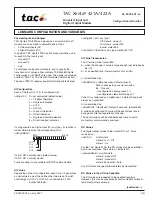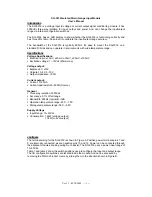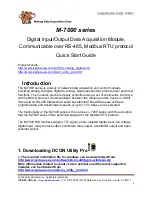
Chapter 2
Analog Input
2-2
ni.com
Instrumentation Amplifier (NI-PGIA)
The NI programmable gain instrumentation amplifier (NI-PGIA) is a
measurement and instrument class amplifier that guarantees minimum
settling times at all gains. The NI-PGIA can amplify or attenuate an AI
signal to ensure that you use the maximum resolution of the ADC.
E Series devices use the NI-PGIA to deliver full 16- and 12-bit accuracy
when sampling multiple channels at high gains and fast rates. E Series
devices can sample channels in any order at the maximum conversion rate,
and you can individually program each channel with a different input
polarity and range, as discussed in the
section.
A/D Converter
The analog-to-digital converter (ADC) digitizes the AI signal by
converting the analog voltage into a digital number.
AI FIFO
A large first-in-first-out (FIFO) buffer holds data during A/D conversions
to ensure that no data is lost. E Series devices can handle multiple A/D
conversion operations with DMA, interrupts, or programmed I/O.
Analog Trigger
Refer to the
section for information about the
trigger circuitry of E Series devices.
AI Timing Signals
Refer to the
section for information about the
analog input timing signals available on E Series devices.
Input Polarity and Range
You can individually program the input range of each AI channel on your
E Series device. Input range refers to the set of input voltages that an analog
input channel can digitize with the specified accuracy.
The input range affects the resolution of the E Series device for an AI
channel. Resolution refers to the voltage of one ADC code. For example, a
16-bit ADC converts analog inputs into one of 65,536 (= 2
16
) codes that is
one of 65,536 possible digital values. These values are spread fairly evenly
















































